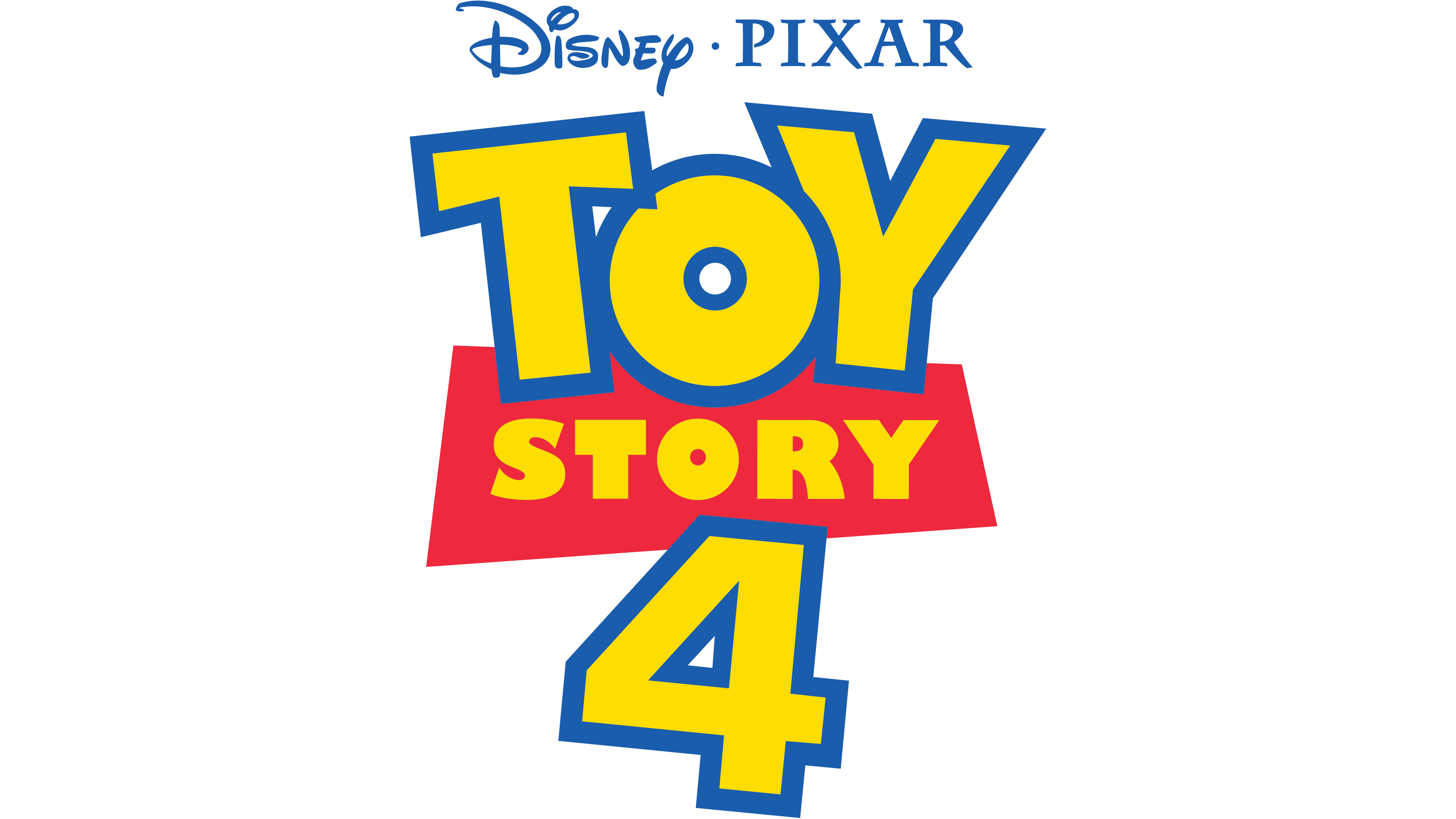Toy Story Logo
“Toy Story,” the groundbreaking 1995 Pixar film, brings toys to life, showcasing their adventures when humans aren’t watching. Cowboy Woody, voiced by Tom Hanks, faces an existential crisis when his owner, Andy, gets a new toy, the futuristic Buzz Lightyear, voiced by Tim Allen. This tale of friendship, acceptance, and the fear of obsolescence tugs at the heartstrings while also providing laughter and action-packed scenes that have cemented it as a timeless classic in both animation and film history.
Meaning and history
“Toy Story reshaped the landscape of children’s films through its engaging storytelling and pioneering computer animation. At its core, the film is a tale of friendship, loyalty, and acceptance, artfully wrapped in humor and adventure.
The narrative unfolds in a world where toys come to life when humans aren’t around. The protagonist, Woody, a cowboy doll voiced by Tom Hanks, is the favorite toy of a boy named Andy. However, Woody’s world is turned upside down when Andy receives a new toy, Buzz Lightyear, a space ranger action figure voiced by Tim Allen.
Jealous of the attention Buzz receives, Woody’s actions inadvertently cause Buzz to fall out of a window, leading to a thrilling adventure as the duo navigates the outside world to return home. Along the way, they encounter various challenges, from the sadistic neighbor Sid, who mutilates toys for fun, to the realization that they are merely toys in a vast, indifferent universe.
Despite the obstacles, Woody and Buzz’s journey is one of mutual discovery and growth. They learn the importance of friendship and self-acceptance, ultimately forming an unbreakable bond. The film culminates in a heartwarming reunion with Andy, solidifying the duo’s place in his heart and each other’s lives.
“Toy Story” is not just a children’s movie; it is a timeless story that resonates with audiences of all ages. Its legacy is evident in its influence on subsequent animations and its enduring popularity, symbolizing the magic of childhood and the power of imagination.
What is Toy Story?
“Toy Story” is a pioneering animated film where toys come to life, hidden from human eyes. It’s a tale of friendship and adventure, centered around Woody, a cowboy doll, and Buzz Lightyear, a space ranger figure, as they navigate challenges and form an unlikely bond. This imaginative story delves into the secret world of toys, blending humor, heart, and groundbreaking animation.
1995
The first insignia of the animated film features a title divided into two tiers. The upper tier (“Toy”) is unadorned with any backdrop, presenting itself in capital letters that appear to “sway” to their own rhythm – “T” leaning leftward, and “Y” rightward. Encircling each character is a robust azure strip, with their interiors bathed in a vivid shade of yellow.
Below this, the term “Story” resides, neatly positioned upon a geometrical figure akin to a rectangle. This space is painted a vibrant red, upon which bold yellow strokes make a prominent display. Notably, the word above partially overlaps this rectangular element, creating a visually intriguing interplay between the two textual components.
1999
The sequel to the animated film introduced an updated emblem, reflecting a more contemporary aesthetic complete with a three-dimensional illusion. This effect is achieved through the clever utilization of shadows paired with the azure borders encircling the letters of the upper tier. As a consequence, the aforementioned border seems to leap out from the rest of the design.
A noteworthy addition to this rendition is the inclusion of a third tier, featuring the numeral indicative of the series installment. This numeral is encompassed in a framing style reminiscent of the first word, harmoniously tying together the various elements of the logo to create a cohesive and visually appealing whole.
The logo’s evolution mirrors the progression of the animation industry, encapsulating the blend of tradition and innovation that characterizes the medium. Just as the film itself builds upon its predecessor, the emblem showcases a commitment to staying relevant while honoring its roots. This synergy of past and present, tradition and modernity, is emblematic of the timeless appeal that has endeared the franchise to audiences around the globe.
2010
The third installment of the feature-length animation made its debut adorned with a symbol bearing a close resemblance to its predecessor’s logo, albeit with a few subtle alterations. In an endeavor to amplify its dimensional appearance, the design team opted for a cerulean hue for the light frame, foregoing the former warm yellow in favor of a zesty lemon shade. In accordance with its sequence in the series, the numeral “2” was duly updated to “3”.
An additional touch was the incorporation of the names of the Pixar studio and the Disney company, strategically positioned at the crest of the emblem. To prevent any visual conflation of the two appellations, a diminutive dot was inserted as a separator.
These nuanced modifications reflect a meticulous attention to detail and a commitment to evolving the emblem in tandem with the progression of the film series. The resulting logo is not just a visual identifier, but a testament to the harmonious collaboration between Pixar and Disney, as well as a nod to the franchise’s storied legacy and its continuous pursuit of innovation and excellence. It stands as a beacon of creativity, inviting audiences to once again immerse themselves in the captivating world brought to life by the magic of animation.
2019
In the emblem of the fourth installment of the Toy Story saga, a noticeable adjustment was made in terms of shadow play. These shadows were not only diminished in number, but also refined to a point of near imperceptibility, ensuring a cleaner and more polished look. The subtle shadow cast by the letter “O” onto the left flank of “Y” stands as a testament to the meticulous attention to detail employed by the designers.
The numeral “4”, marking this chapter in the series, was crafted with the same geometrical precision and smoothness that characterized its predecessor, the “3”. Despite this, the “4” retains its characteristic right angles, preserving its distinct form.
A touch of depth was added to the backdrop of the word “Story” through the infusion of a richer, deeper shade of red. This not only enhances the visual appeal of the logo, but also serves to create a sense of continuity with the preceding versions, ensuring a seamless visual narrative across the series. The emblem, in its entirety, stands as a testament to the evolution of the Toy Story franchise, encapsulating its rich history while also heralding its steadfast march towards a future filled with promise and innovation.















